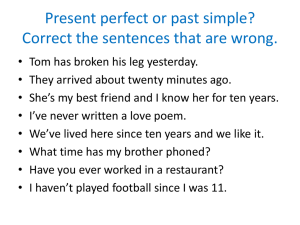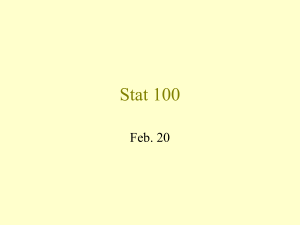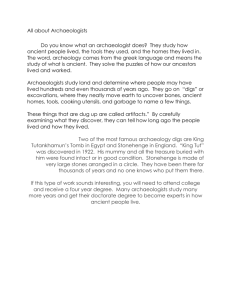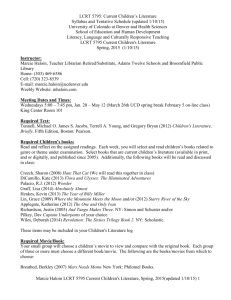Study Guide
advertisement
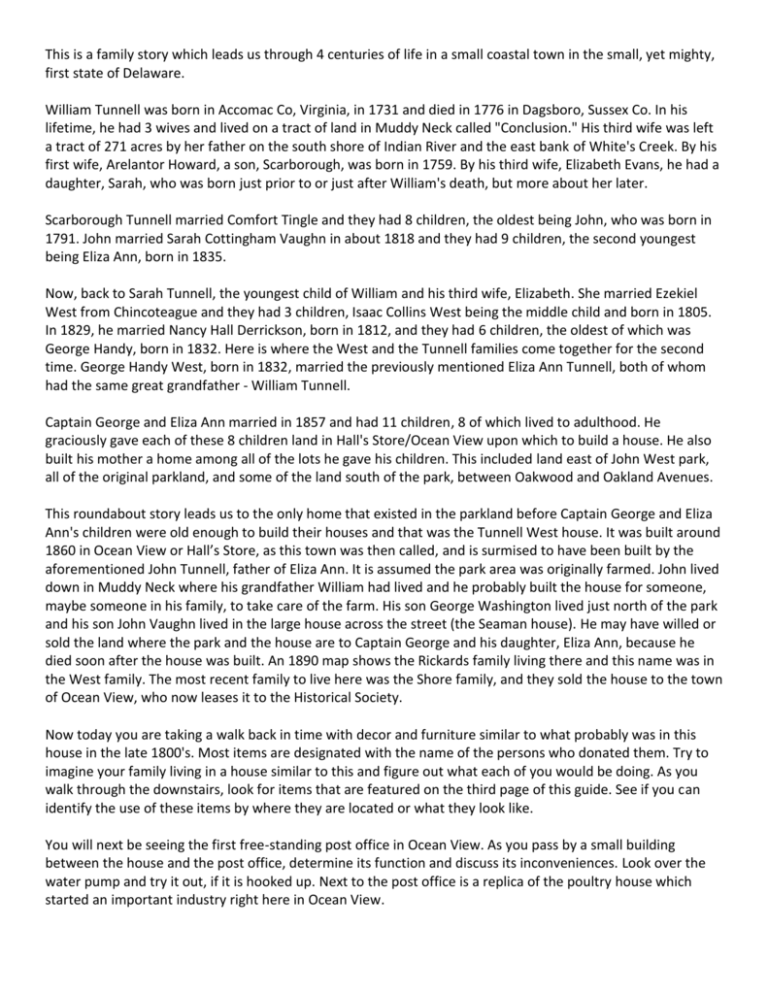
This is a family story which leads us through 4 centuries of life in a small coastal town in the small, yet mighty, first state of Delaware. William Tunnell was born in Accomac Co, Virginia, in 1731 and died in 1776 in Dagsboro, Sussex Co. In his lifetime, he had 3 wives and lived on a tract of land in Muddy Neck called "Conclusion." His third wife was left a tract of 271 acres by her father on the south shore of Indian River and the east bank of White's Creek. By his first wife, Arelantor Howard, a son, Scarborough, was born in 1759. By his third wife, Elizabeth Evans, he had a daughter, Sarah, who was born just prior to or just after William's death, but more about her later. Scarborough Tunnell married Comfort Tingle and they had 8 children, the oldest being John, who was born in 1791. John married Sarah Cottingham Vaughn in about 1818 and they had 9 children, the second youngest being Eliza Ann, born in 1835. Now, back to Sarah Tunnell, the youngest child of William and his third wife, Elizabeth. She married Ezekiel West from Chincoteague and they had 3 children, Isaac Collins West being the middle child and born in 1805. In 1829, he married Nancy Hall Derrickson, born in 1812, and they had 6 children, the oldest of which was George Handy, born in 1832. Here is where the West and the Tunnell families come together for the second time. George Handy West, born in 1832, married the previously mentioned Eliza Ann Tunnell, both of whom had the same great grandfather - William Tunnell. Captain George and Eliza Ann married in 1857 and had 11 children, 8 of which lived to adulthood. He graciously gave each of these 8 children land in Hall's Store/Ocean View upon which to build a house. He also built his mother a home among all of the lots he gave his children. This included land east of John West park, all of the original parkland, and some of the land south of the park, between Oakwood and Oakland Avenues. This roundabout story leads us to the only home that existed in the parkland before Captain George and Eliza Ann's children were old enough to build their houses and that was the Tunnell West house. It was built around 1860 in Ocean View or Hall’s Store, as this town was then called, and is surmised to have been built by the aforementioned John Tunnell, father of Eliza Ann. It is assumed the park area was originally farmed. John lived down in Muddy Neck where his grandfather William had lived and he probably built the house for someone, maybe someone in his family, to take care of the farm. His son George Washington lived just north of the park and his son John Vaughn lived in the large house across the street (the Seaman house). He may have willed or sold the land where the park and the house are to Captain George and his daughter, Eliza Ann, because he died soon after the house was built. An 1890 map shows the Rickards family living there and this name was in the West family. The most recent family to live here was the Shore family, and they sold the house to the town of Ocean View, who now leases it to the Historical Society. Now today you are taking a walk back in time with decor and furniture similar to what probably was in this house in the late 1800's. Most items are designated with the name of the persons who donated them. Try to imagine your family living in a house similar to this and figure out what each of you would be doing. As you walk through the downstairs, look for items that are featured on the third page of this guide. See if you can identify the use of these items by where they are located or what they look like. You will next be seeing the first free-standing post office in Ocean View. As you pass by a small building between the house and the post office, determine its function and discuss its inconveniences. Look over the water pump and try it out, if it is hooked up. Next to the post office is a replica of the poultry house which started an important industry right here in Ocean View. This page has questions the docents or teachers can ask about the experience: 1. Be sure to compare and contrast these items and this house to the things which we are used to today. 2. Look carefully at how well this house was built and the construction details that make it so attractive. 3. What rooms were not here in the 1800's that we have now? 4. What things were not available then that we have now? Heat, electricity, water, plumbing, washer, dryer, tv, phone, computer, etc. What did they do for these things? 5. How would the children who lived here have entertained themselves? The adults? 6. What jobs would anyone in these coastal towns have had before the chicken industry came? 7. How would guests have entered the house? How would the family have entered? Santa? 8. What form of transportation was there? What did that require? 9. What purpose did the beach and bay serve back then? 10. Many families were very large (8 or more children, parents, grandparents, etc.). Where did they all sleep? 11. How do we learn about lives of people from around here who lived in the 1800's? 12. Would it have been as cold here in the winter and as hot in the summer as it is today? What would they have done about that? 13. Where would they have gotten food and supplies? How did they store the food? 14. What type of clothing did people wear? 15. What is different, especially back in the 1800's, about living in a small coastal town, far away from any large cities? What was better and what was missing? 16. What events took place after 1860 that changed these towns and the whole world? 17. Which life would you prefer - life in 1860 or life in 2015? Why? 18. Who and when were the first people who lived in this area? Lenni Lenape and Nanticoke Indians 19. Where did most of the people who settled here in the 1600's come from? The Netherlands and England 20. Tell me in one sentence what you learned today. Before the visit: 1. Students can choose a book to read from the following list of books, either written around the Victorian time period, or written about the area: a. Come Back to Bethany – a fictional story about 3 different families who lived over three centuries in the Bethany Beach area and Chickens and Mosquitos, about Delaware in the Great Depresssion; by Bethany author Carol Psaros b. Heidi by Johanna Spyri c. Alice in Wonderland by Lewis Carroll d. The Secret Garden or The Little Princess by Frances Hodgson Burnett e. Any Howard Pyle books – written in Wilmington and based on classic tales f. Little Women and other books by Louisa May Alcott g. Treasure Island by Robert Louis Stevenson h. Black Beauty by Anna Sewell i. Huckleberry Finn and other stories by Mark Twain 2. Draw or write about your impressions of life in the 1860’s by doing research and reading about the era. 3. Divided into groups, have each group create a presentation of what occupations in Ocean View and the surrounding towns would have been like and either demonstrate, dramatize, or tell a story of these careers. 4. Do a genealogy chart of the Tunnell and West family to better see the interrelations. After the visit: 1. Compare and contrast the differences in your impressions of life in the 1860’s before and after visiting the OV Historical Complex. 2. Review the questions on page 2 of this guide and have a discussion about their answers. 3. Have a whole day of “life in the 1860’s” and include dress, food, games*, school lessons, and decorations which would be indicative of the time. 4. Older students can do independent studies relating to the lifestyle, occupations, architecture, family values, and religious aspects of the Ocean View inhabitant of the mid to late 1800’s. 5. The Tunnell/West house is on the National Register of Historic Places – find out what this means and the benefits it offers. *Games For All Occasions (by Mary E. Blain, written in 1930) 1. 2. 3. Animal Crackers – have as many animal crackers as there are children. Roll each cracker in colored tissue paper, using a variety of animals. Place them in a basket. The children are to sit in a semi-circle. Start at either end of the circle and have that child pick out a package form the basket. In the next room, he opens the package and discovers the animal he is to pantomime. He returns to the room and “acts out” the animal, while the children guess. He returns to the circle when they guess and the next child in line repeats the action. Bean Bag – All stand in line except the leader, who stands a short distance from the line. He throws the bean bag to the head of the line who returns it to the leader. He then throws it to the next child, etc. Anyone who fails to catch the bag must go to the foot of the line. If the leader fails to catch the bag, he must go to the foot of the line and the one at the head of the line becomes the leader. Button, Button – All the children except one sit in a circle with hands placed palm to palm in their laps. The child passing the button holds it between her palms and goes to each child, in turn, slipping her hands between the palms of the children. As she goes around the circle she drops the button into some child’s hands, but continues on around, so the rest will not know who has it. Then she stand in the middle of the circle and says, “Button, button, who has the button?” As the children guess who has it, the one calling out the correct name first is next to go around with the button. For further information, contact Barbara Slavin, educational coordinator, at 302-593-8814 or slavinbe1@yahoo.com
